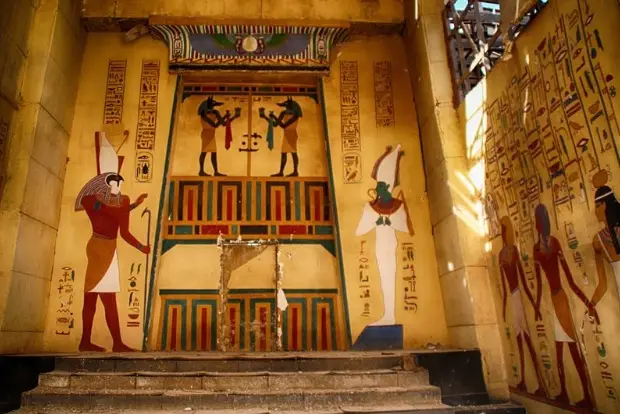Ancient Artz: Exploring Cave Paintings and Stone Carvings

Art has allowed humans to express themselves, tell stories, and share their culture. From the very beginning of human history, people have been creating art. Some of the earliest examples of art come from ancient civilizations, and these works give us a glimpse into how people lived, what they believed in, and what was important to them.
This article will take you on a journey through some of the most remarkable art from ancient artz times, from the cave paintings of early humans to the grand sculptures and buildings of ancient Egypt, Greece, and Rome. Each piece of art tells its own story and shows us a piece of history, allowing us to connect with people who lived thousands of years ago.
The Earliest Ancient Artz: Cave Paintings and Stone Carvings
The oldest known pieces of art are cave paintings and stone carvings. These were created by early humans who lived over 30,000 years ago. They didn’t have the tools or materials that artists use today, but they used what they could find around them, such as stones and animal bones, to create images on the walls of caves.
One of the most famous places with these ancient artworks is the Lascaux Cave in France. Inside are paintings of large animals like horses, deer, and bulls, which were important to the people at that time because they relied on them for food and clothing.
The colours in these cave paintings were made from natural materials. People used charcoal from their fires and minerals found in the ground, mixing them with water or animal fat to make paint. They then used their hands, sticks, or brushes made from animal hair to create these stunning images. It’s amazing how, even thousands of years ago, humans wanted to create and leave a mark on the world.
Mesopotamia: The Cradle of Civilization
As time passed, humans began settling in one place, building homes, and farming. This change led to the rise of some of the world’s first cities and civilizations. One of these early civilizations was Mesopotamia, often called the “Cradle of Civilization” because it was one of the first places where complex societies began to develop. The people of Mesopotamia created many incredible art pieces, including sculptures, pottery, and intricate jewellery.
One of the most famous artefacts from this time is the Stele of Hammurabi, a large stone slab with a set of laws carved into it. At the top of the stele is a carving of King Hammurabi receiving the laws from the god Shamash, showing the connection between the gods and the rulers of the time. This piece of art is beautiful and provides a look into the legal and social systems of ancient Mesopotamia.
Ancient Egypt: Art for Eternity
The ancient Egyptians are well-known for their incredible art and architecture, especially their pyramids, temples, and tombs. Art in ancient Egypt was often created for religious or funerary purposes. The Egyptians believed in an afterlife, filling their tombs with paintings, sculptures, and treasures to ensure the deceased could enjoy their next life.
These works of art were not just for decoration; they were meant to help the dead navigate the afterlife and protect them from evil spirits.
One of the most famous pieces of Egyptian art is the bust of Nefertiti, which shows the queen with a tall, blue headdress and a calm, serene expression. This sculpture is over 3,000 years old, yet it still looks incredibly lifelike, showing the skill of the artists who created it.
The Egyptians also created massive statues of their gods and pharaohs, like the Great Sphinx of Giza, which had a lion’s body and a human’s head. These statues were meant to show the power and divinity of the rulers and gods, and they still impress people today with their size and detail.
Greece: The Birthplace of Western Art
Ancient Greece is often called the birthplace of Western art because of its huge influence on the art and culture of Europe and the Americas. Greek art is known for its focus on the human body and realistic portrayal of people. The Greeks believed that the human body was the most beautiful and perfect creation, so they often depicted gods, heroes, and athletes in their art as strong, healthy, and idealized figures.
One of the most famous examples of Greek art is the Parthenon, a temple dedicated to the goddess Athena located on the Acropolis in Athens. The Parthenon is covered in sculptures and carvings that show scenes from Greek mythology and the Panathenaic procession, a festival held in honour of Athena. These sculptures are incredibly detailed and show the skill of the Greek artists in capturing movement and emotion in stone.
Greek art also includes pottery, often featuring scenes from everyday life, mythology, and sports. These pots were used for various purposes, from storing food and wine to being used in religious ceremonies. The Greeks also created beautiful jewellery, coins, and small statues that showed their love for beauty and detail.
Rome: Art for Power and Prestige
The ancient Romans were greatly influenced by Greek art and also contributed to the art world. Roman art is known for its realism and use of art as a tool for propaganda. The Romans used art to show their power and prestige, depicting their emperors, gods, and military victories in grand sculptures, mosaics, and buildings.
One of the most famous pieces of Roman art is the statue of Augustus of Prima Porta. This statue shows the first Roman emperor, Augustus, in a heroic pose. It was meant to show Augustus as a strong and capable leader with the support of the gods.
Roman artists also created beautiful mosaics made from small pieces of coloured stone, glass, or pottery to decorate the floors and walls of their homes and public buildings.
The Romans were also great architects, building impressive structures like the Colosseum, a massive amphitheatre for gladiator games and other public spectacles. The Colosseum is an incredible example of Roman engineering and design, and it has influenced many modern buildings, including sports stadiums.
Art as a Window to the Past
Art from ancient civilizations gives us a window into the past, allowing us to see how people lived, what they believed in, and what they valued. These works of art show us the creativity and skill of people from thousands of years ago, and they continue to inspire and amaze us today. Whether the simple cave paintings of early humans or the grand sculptures and buildings of ancient Egypt, Greece, and Rome, each piece of art tells its story and helps us connect with our shared human history.
Conclusion
The art of ancient civilizations is more than just beautiful objects; it is a record of human history and culture. By studying these artworks, we can learn about the beliefs, values, and daily lives of people from long ago. From the cave paintings of early humans to the grand sculptures and buildings of ancient Egypt, Greece, and Rome, each piece of art tells a story passed down through the ages.
This art not only shows us the skill and creativity of ancient artists but also helps us understand the world they lived in. As we continue to explore and study these ancient artworks, we keep discovering new things about our past, enriching our understanding of human history. You can also know about Hamro Solar LLC by going through that blog.
FAQs
What materials did ancient artists use to create their art?
Ancient artists used materials available to them, such as stone, wood, metals, clay, and natural pigments from plants and minerals. For example, early humans used charcoal and minerals to create cave paintings, while ancient Egyptians used stone and gold for sculptures and jewellery.
Why did ancient Egyptians create so much art related to the afterlife?
The ancient Egyptians believed in an afterlife, where people would live after they died. They created art to help the deceased navigate the afterlife, provide for them in their next life, and protect them from evil spirits. This is why many Egyptian tombs are filled with paintings, sculptures, and treasures.
How did Greek art influence Roman art?
Greek art greatly influenced Roman art, especially its focus on realism and the human body. The Romans admired Greek sculptures and often copied them. Still, they also added their elements, such as using art for propaganda and emphasizing the power of their leaders and the military.
What is the importance of studying ancient artz today?
Studying ancient art helps us understand the history, culture, and beliefs of people from long ago. It provides insight into how they lived, what was important to them, and how they saw the world. This knowledge can enrich our understanding of human history and connect us with our shared past.
How did ancient artists achieve such realistic depictions in their sculptures?
Ancient artists, especially in Greece and Rome, studied the human body closely and practised for many years to perfect their techniques. They paid great attention to detail, proportions, and anatomy, which allowed them to create lifelike sculptures that captured the beauty and complexity of the human form.
What are some of the most famous ancient artworks?
Some of the most famous ancient artworks include the cave paintings of Lascaux, the bust of Nefertiti, the Parthenon sculptures, the Colosseum, and the Stele of Hammurabi. These pieces are renowned for their beauty, craftsmanship, and the stories they tell about the civilizations that created them.





